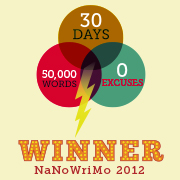
.
Yesterday the state of Washington started issuing marriage licenses to same-sex couples. King County made a big production of it, opening the clerk’s office at 12:01 am on December 6th, and holding a little ceremony. (Video: news coverage, outside the courthouse, a short piece, full ceremony.) Weddings will not start taking place until this Sunday, because Washington has a three day waiting period.
After all votes were counted, Referendum 74 was approved 54-46 statewide. Washington has 39 counties and the referendum was only approved in 10 of them. Only one county in the very conservative eastern half of the state (where WSU is located) approved the referendum.
Those bare numbers are only part of the story. The most interesting numbers are from the counties where the referendum failed. Adams County, a rural area with a low population, had the lowest approval rate at only 28 percent, which looks rather daunting. But only 3 counties had an approval rate of under 30%. In 14 counties where the referendum failed, is was still approved by over 40% of voters.
These numbers are promising, not only for the eventual general acceptance of married same-sex couples as they become a common part of our communities in this state, but also for the nation as a whole. Washington is a deeply divided state between liberal and conservative halves. Yet even in most of the conservative bastions there exists a significant base of support for equality on which to build.
Marriage equality would not be possible without the efforts made by our straight allies. Minorities, by the fact of being minorities, are only able to accomplish a certain amount on our own. Technically the US Constitution grants all citizens equal rights, but the truth is that most minorities have had to fight to obtain equality.
As minorities we have to bring our issues to the attention of the majority, demanding the respect and equal treatment we are due. At a certain point we usually have to depend on the fairness of the majority to recognize our plight and join us in the fight to make equality a reality. So I want to thank all the fair-minded straight people of Washington State who made this a reality by staffing phone banks, donating money, and voting. Dan Savage said it pretty well here.
The National Organization for Marriage (NOM), is the primary organizer against marriage equality. Going into the November 2012 elections they said they would be victorious, continuing their substantial winning streak at the ballot box, because the majority of Americans still believe marriage is only between one man and one woman. But they lost in a clean sweep of all four states.
NOM now claims that they expected to lose because the four states are deep blue states, and because their opponents were better funded. There is truth in both of those reasons, but you have to look deeper than that.
Why were they underfunded and understaffed compared to equality proponents? It’s because their cause is no longer a popular one. There are more people and companies supporting equality than there are those against it enough to cough up hard-earned dollars or their precious time to campaign. NOM is not yet willing to concede this point, but it’s there for anyone to see. In 2009 five donations made up 75% of their funding, and in 2010 only two donors accounted for two-thirds of their funding. They are not a grassroots organization.
More importantly though, marriage equality supporters have learned the necessary lessons from past losses. They were aggressive this time in controlling the conversation and in quickly responding to the lies told in ads by the anti-equality groups.
The central message changed from one of gay people demanding equal rights, which is more cold and abstract, to one of average citizens, including people of faith, talking about family, love, and commitment, which is a warm message people respond to positively on a gut level. The anti-equality people only trotted out the same old bigotry and lies they’ve depended on in the past, and that doesn’t play as well as it did ten years ago.
Just as importantly, it was the questions being asked on the ballots. Social science and polling has long demonstrated that how a question is asked, or which question is asked, will to a great extent affect the answers received.
Much earlier in the year marriage equality advocates suffered a big loss in North Carolina, where voters approved an amendment to the state constitution banning all recognition of same-sex relationships, including marriage. It passed by 61%. Some of that large margin was due to voter confusion about what the amendment actually did, but a lot of it was due to the question being asked: should marriage between one man and one woman be the only domestic legal union recognized by the state.
There is a highly crucial distinction between voting about the definition of marriage, and voting about the rights of fellow citizens. There are a significant number of people in this country who occupy a middle ground on this issue. They believe on a personal level that marriage is only an institution between men and women, yet at the same time they’re fair-minded and believe that others should be allowed to enjoy full rights as citizens.
These middle ground people often vote according to which question they are asked. If asked: should marriage be defined only as a union between one man and one woman, they’ll often vote yes. It’s what they believe. But if asked instead: should same-sex couples be allowed to marry, many of them will vote yes on that, especially if the language includes explicit protection for religious freedom. It sounds like a semantics issue, but it’s much more than that. How a question is asked taps into people’s deeply held beliefs about what is right and what is fair.
In all three states where marriage equality was approved in November, the language used on the ballot was directly responsible for helping to insure success. Straight voters were not asked about the definition of marriage, they were asked if their fellow citizens should have the same rights they already enjoy.
These lessons about controlling the message, making the message more accessible to the average person, and insuring that ballot language reflects what is actually being voted on will help pave the way for future success down the road in other states.





